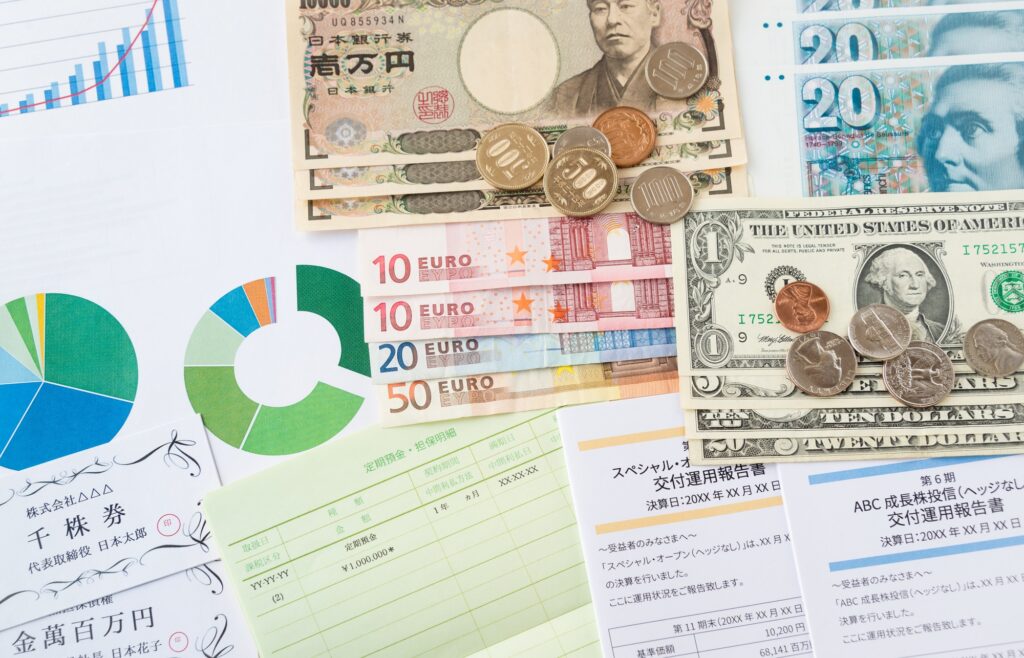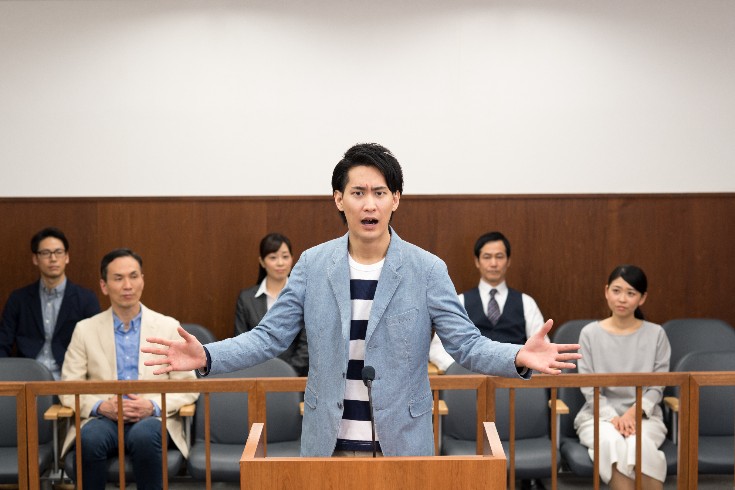In-kind Contributions in Japanese Corporate Law: A Comprehensive Guide to Capital Formation at Incorporation

In establishing a company, preparing the capital is one of the most crucial steps. Typically, capital is paid in cash, but the Japanese Companies Act allows for contributions in kind, meaning assets other than cash. This system is known as “in-kind contribution.” In-kind contributions are a highly flexible and valuable method that enables the establishment of a company using assets such as real estate, vehicles, or intellectual property rights, even when sufficient cash is not on hand. However, behind this convenience lies strict legal regulations to protect the financial foundation of the company. At the heart of these regulations is the “principle of capital adequacy.” This principle ensures that the company’s capital is not merely nominal but is composed of assets that truly correspond to its value, thereby protecting the company’s creditors and future investors. While the value of cash is clear, the value of in-kind assets is subjective and always carries the risk of overvaluation. This risk is the fundamental reason why Japanese corporate law imposes detailed and stringent procedures for in-kind contributions. This article will comprehensively explain the basic concept of in-kind contributions, the strict valuation procedures stipulated by Japanese corporate law, practical exceptions, and the significant legal liabilities that arise from non-compliance with these regulations.
The Basic Concept of In-Kind Contributions and the Principle of Capital Adequacy Under Japanese Corporate Law
In-kind contributions refer to the act of founders providing non-monetary assets such as real estate, vehicles, marketable securities, and intellectual property rights instead of cash at the time of a company’s establishment, in exchange for the issuance of shares. This system is particularly beneficial for entrepreneurs as it allows the direct incorporation of assets necessary for the business into the capital.
At the foundation of Japanese Corporate Law lies the fundamental principle of ‘capital adequacy.’ This principle is based on the premise that a company’s capital should serve as the foundation of its creditworthiness and provide a minimum guarantee to creditors. Therefore, it is necessary that the property equivalent to the amount of capital stated in the articles of incorporation is actually contributed to and maintained by the company. In the case of cash contributions, the value is clear, making it easy to verify compliance with this principle. However, with in-kind contributions, the valuation of the assets contributed is inherently subjective and carries the risk of overvaluation. For example, if equipment with an actual value of 1 million yen is contributed as if it has a value of 10 million yen, the company’s capital would be publicly stated as 10 million yen, while its substantive value would be significantly lower. Such ‘apparent capital’ weakens the financial foundation of the company and may cause unexpected damage to creditors who have engaged in transactions based on that credit.
The risk of overvaluation that threatens the principle of capital adequacy is the core reason why Japanese Corporate Law imposes strict regulations on in-kind contributions. The law constructs a series of detailed procedural safeguards to prevent potential abuse, including detailed disclosure obligations in the articles of incorporation, objective valuation procedures, and severe legal liabilities for overvaluation. All the regulations detailed hereafter can be understood as logical consequences to substantively ensure the principle of capital adequacy.
Assets Eligible for In-Kind Contributions Under Japanese Corporate Law
Assets that can be the subject of in-kind contributions must meet two basic legal requirements in Japan. Firstly, the property must be transferable (transferability), and secondly, it must be capable of being recorded as an asset on the company’s balance sheet. This means that the contributed property must be clearly recognized as an asset of the company and be convertible into cash if necessary.
Examples of assets that meet these requirements include:
- Tangible fixed assets: Real estate such as land and buildings, vehicles, machinery and equipment, office automation (OA) equipment like computers and servers.
- Intangible fixed assets: Intellectual property rights such as patents, trademarks, copyrights, and goodwill (business rights).
- Other assets: Marketable securities such as publicly traded stocks, merchandise for sale, and raw materials used in manufacturing.
On the other hand, assets that do not meet these requirements cannot be the subject of in-kind contributions. For example, an individual’s labor or specialized services (labor services), or an individual’s creditworthiness itself, cannot be recorded as transferable assets on the balance sheet and therefore are not eligible for in-kind contributions.
Regulations Under Japanese Corporate Law: In-Kind Contributions as Special Establishment Matters
In-kind contributions carry the risk of undermining the principle of capital adequacy, and thus, Japanese Corporate Law treats them as “special establishment matters.” This legal term refers to items that require particularly careful regulation during the company formation process, as they could potentially harm the company’s financial foundation based on the discretion of the incorporators.
The core of this regulation is the obligation to include certain details in the articles of incorporation. Article 28, Paragraph 1, Item 1 of the Japanese Corporate Law strictly mandates that the following matters related to in-kind contributions must be recorded in the articles of incorporation, the company’s fundamental rules, for them to be effective:
- The name or corporate name of the person making the in-kind contribution
- The property being contributed and its value
- The number (and type) of shares to be allocated to that contributor at the time of the company’s establishment
This inclusion in the articles of incorporation is not merely a formal procedure. It is an absolute requirement with the powerful legal effect of “rendering it ineffective” if not complied with. Due to this provision, the details of in-kind contributions are determined and publicly disclosed at the stage of the company’s establishment. This publicly disclosed record serves as a legal basis for later valuation investigations and accountability, ensuring transparency for all stakeholders. It prevents incorporators from later claiming different values or making informal in-kind contributions, thereby institutionally safeguarding the principle of capital adequacy.
Valuation Investigation Procedures: The Principle of Inspector Examination Under Japanese Corporate Law
To ensure the objectivity of the valuation of in-kind contributions, the principal procedure established by Japanese Corporate Law is an investigation by an inspector appointed by the court. Article 33, Paragraph 1 of the Japanese Corporate Law stipulates that if the articles of incorporation include provisions for atypical establishment matters such as in-kind contributions, the incorporators must promptly apply to the court for the appointment of an inspector.
In this procedure, the incorporators first file an application with the competent court, which then appoints a neutral third party (usually a lawyer or similar professional) as the inspector. The appointed inspector conducts a rigorous investigation to determine whether the value of the contributed assets is appropriate as stated in the articles of incorporation and submits a report of the findings to the court. This process excels in ensuring the maximum objectivity of the valuation; however, it also presents practical challenges due to the significant amount of time and costs involved. Consequently, for startups and small to medium-sized enterprises that require a swift establishment, this principal procedure may not always be a viable option, highlighting the importance of the exceptional provisions discussed next.
Exceptional Measures for Inspector’s Investigation Under Japanese Corporate Law
Recognizing that an inspector’s investigation can be a significant burden for companies aiming to establish themselves, Japanese Corporate Law has implemented important exceptions to balance the demands of capital protection with the practical need for smooth establishment procedures. These exceptions, stipulated in Article 33, Paragraph 10 of the Japanese Corporate Law, have become the main route in practice when in-kind contributions are made.
The first exception concerns minor assets. Under Article 33, Paragraph 10, Item 1 of the Japanese Corporate Law, if the total value of in-kind contribution assets listed in the articles of incorporation is 5 million yen or less, an inspector’s investigation is not required. This provision aims to promote the establishment of small and medium-sized companies and is the most widely used exception in practice.
The second exception pertains to marketable securities with a market price. According to Article 33, Paragraph 10, Item 2 of the Japanese Corporate Law, if the subject of the in-kind contribution is marketable securities traded on the public market, and the value stated in the articles of incorporation does not exceed the objective market price, the inspector’s investigation is waived. This is based on the rational judgment that the market itself provides a reliable and objective valuation, making a separate investigation unnecessary.
The third exception is certification by professionals. As per Article 33, Paragraph 10, Item 3 of the Japanese Corporate Law, if a qualified professional such as an attorney, certified public accountant, or tax accountant certifies that the value stated in the articles of incorporation is reasonable, the inspector’s investigation can be omitted. However, it is important to note that if the contributed assets are real estate, an appraisal evaluation by a real estate appraiser is also required in addition to the professional’s certification.
Understanding these options is extremely important when considering in-kind contributions. The table below compares the overview and personalityistics of each procedure.
| Type of Procedure | Overview | Applicable Conditions | Main Features |
| Principal: Inspector’s Investigation | An inspector appointed by the court investigates the value of the assets. | All in-kind contributions that do not fall under the exceptions. | The procedure is strict and time-consuming but offers the highest objectivity. |
| First Exception: 5 Million Yen or Less | The inspector’s investigation is not required. | When the total value of in-kind contribution assets listed in the articles of incorporation is 5 million yen or less. | The most convenient and accessible exception. An investigation by the directors at the time of establishment is required. |
| Second Exception: Marketable Securities with Market Price | The inspector’s investigation is not required. | When contributing marketable securities at or below their market price. | Objectivity of valuation is ensured, simplifying the procedure. |
| Third Exception: Certification by Professionals | Attorneys, certified public accountants, tax accountants, etc., certify the appropriateness of the value. | For properties exceeding 5 million yen with professional certification (real estate requires an appraisal evaluation by a real estate appraiser). | Avoids the inspector’s investigation, but incurs the cost of professional fees. The certifier may also bear responsibility. |
Execution of In-Kind Contributions and Required Documents Under Japanese Corporate Law
To legally validate the procedures of in-kind contributions in Japan, a series of certification documents must be accurately prepared and submitted at the time of registration application. Each of these documents plays a specific legal role, and any deficiencies may not only result in the rejection of the registration but could also lead to future disputes.
Firstly, even in cases where the inspection by an inspector is exempted, the initial directors have an obligation to investigate the establishment process themselves, based on Article 46 of the Japanese Companies Act. This investigation includes verifying that the in-kind contribution has indeed been executed and that the value of the property is reasonable in light of the descriptions in the articles of incorporation. The results of this investigation are compiled into a “Survey Report,” which is signed or sealed by the initial directors.
Next, the “Property Transfer Document” legally certifies the transfer of property from the contributor to the company. This document serves as evidence that the contributor has transferred ownership of the assets listed in the articles of incorporation to the company being established, proving the completion of the ‘payment’ of the in-kind contribution. Although there is no strict legal format required, it must clearly state who transferred which property and when.
Finally, the “Certificate of Capital Stock Amount” is created by the representative director at the time of establishment. This certificate verifies that the total amount of monetary contributions and the value of the in-kind contributed property have been correctly recorded as capital stock, in accordance with the provisions of the Japanese Companies Act and the Company Accounting Rules. This document is an essential attachment for the application of the company’s establishment registration at the Legal Affairs Bureau and serves as the final document to officially determine the company’s capital structure.
Valuation Liability: The Risks of Overvaluation and Legal Consequences Under Japanese Corporate Law
One of the greatest risks in kind contributions is the overvaluation of contributed assets, and Japanese Corporate Law has established a strict liability system to address this issue. At the core of this system is the “valuation liability” stipulated in Article 52 of the Japanese Companies Act. According to this provision, if at the time of the company’s establishment, the actual value of the in-kind contributed assets is “significantly less” than the value stated in the articles of incorporation, the promoters and directors at the time of establishment are jointly and severally liable to pay the company the shortfall.
The nature of this liability varies depending on the position of the individuals involved. For the promoters who actually made the overvalued contributions, their liability is a “no-fault liability,” meaning that they are liable regardless of negligence. In other words, even if they acted in good faith, they cannot escape liability if the value is ultimately found to be insufficient. On the other hand, other promoters and directors at the time of establishment who did not contribute the property can avoid liability if they can prove that they were not negligent in the performance of their duties. This is known as “fault-based liability.”
Furthermore, Article 52, Paragraph 3 of the Japanese Companies Act stipulates that experts (such as attorneys, certified public accountants, etc.) who have proven the appropriateness of the value as an exception to the inspector’s investigation are also, in principle, jointly and severally liable to compensate for the shortfall with the promoters. However, these experts can also avoid liability if they can prove that they were not negligent in providing their certification.
Past court cases provide important insights into the scope of application of this liability. For example, in a judgment by the Niigata District Court on December 26, 1977 (Showa 52), although the promoter’s dereliction of duty was recognized, the direct cause of the company’s bankruptcy was excessive capital investment, and there was no substantial causal relationship with the overvaluation of the in-kind contribution, leading to the dismissal of the claim for damages. This indicates that for liability to be established, it is necessary to prove not only the shortfall in value but also a causal relationship that resulted in damage to the company. Additionally, the Osaka High Court judgment on February 19, 2016 (Heisei 28), dealt with the liability of an attorney who provided improper valuation certification, highlighting the significant risks involved for professionals undertaking this certification work and the importance of their high duty of care.
Practical Advantages and Considerations
While the in-kind contribution system can offer significant advantages when properly utilized, it also presents points that require careful consideration.
The main advantages include, firstly, the ability to establish a company using existing assets even without sufficient cash on hand. Secondly, in-kind contributions can inflate the amount of stated capital, which can enhance the company’s creditworthiness with financial institutions and in relationships with business partners. Thirdly, if the contributed assets are subject to depreciation, they can be recorded as losses for corporate tax purposes, potentially leading to long-term tax savings.
On the other hand, there are several points to be cautious about. The complexity of the procedures is one such point. Compared to cash contributions, in-kind contributions involve more specialized procedures, such as entries in the articles of incorporation, valuation investigations, and the creation of various certificates, all of which can be time-consuming and labor-intensive. Next is the issue of capital liquidity. If the majority of the capital is composed of in-kind assets, there may be a shortage of working capital necessary for business operations, posing a risk of management stagnation.
Furthermore, an extremely important point that is often overlooked is the tax treatment. Under Japanese tax law, an in-kind contribution from an individual to a corporation is considered a “transfer of assets” to the corporation. As a result, the contributor may be subject to capital gains tax if the fair market value of the transferred assets (the value of the shares issued) exceeds their acquisition cost. Additionally, from the company’s perspective, if the contributed assets are real estate, there may be an obligation to pay real estate acquisition tax, and if they are taxable assets, there may be a consumption tax liability. Thus, to ensure the success of an in-kind contribution, a comprehensive plan that takes into account not only the procedures under the Companies Act but also the tax implications is essential.
Summary
In-kind contributions are a powerful and flexible means recognized by Japanese Corporate Law for forming a company’s capital. They enable the use of a diverse range of assets to build a business foundation without relying solely on cash on hand. However, as a trade-off for this convenience, strict legal requirements are imposed to maintain the principle of capital adequacy. The path is complex, including accurate descriptions in the articles of incorporation, objective valuation of assets, proper execution procedures, and significant legal liabilities for overvaluation. Without a correct understanding and adherence to these requirements, it is impossible to establish a sound and legally stable company.
Monolith Law Office boasts a wealth of experience and deep expertise in Japanese Corporate Law, particularly in legal affairs related to in-kind contributions. We have provided specialized support at every stage, from structuring in-kind contributions to drafting articles of incorporation and necessary documents, to registration procedures, for numerous clients both domestically and internationally. Our firm is staffed with attorneys who are not only well-versed in Japanese law but also hold foreign legal qualifications and are capable of providing services in English. With this unique strength, we fully support international investors and companies in overcoming Japan’s complex legal regulations and starting their businesses smoothly. For consultations regarding company establishment, including in-kind contributions, please entrust Monolith Law Office with your needs.
Category: General Corporate





















